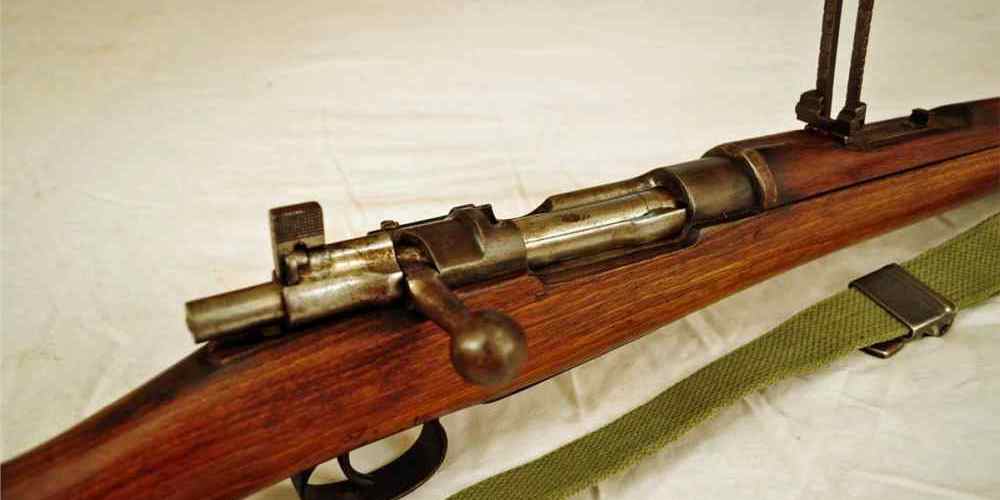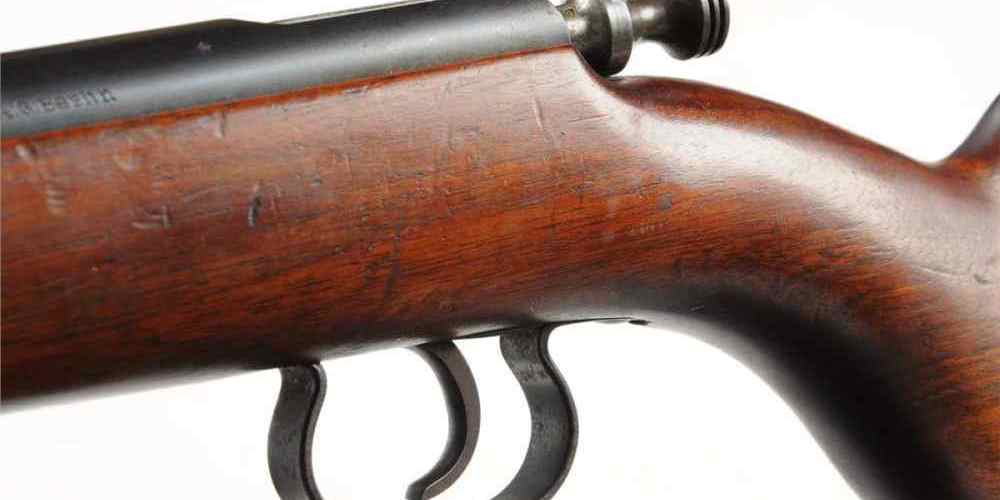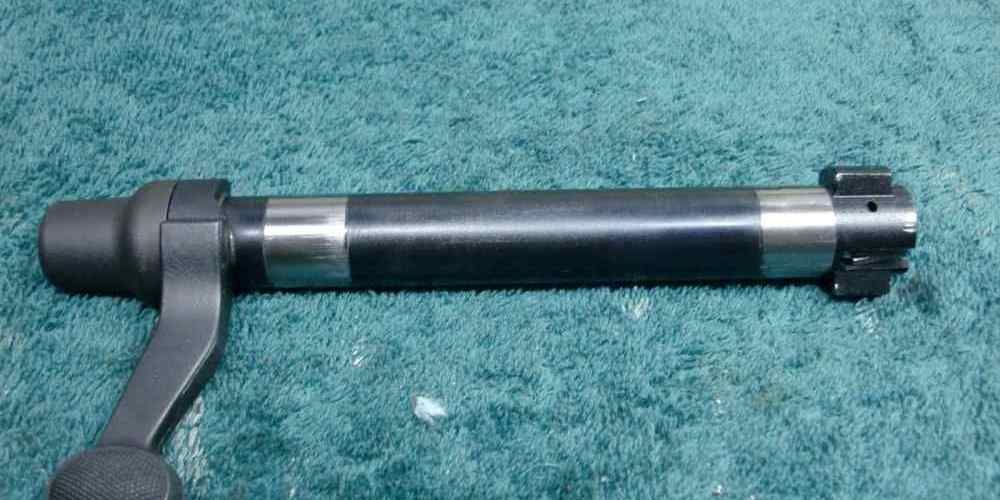“Keep your rifle firing at its best with these essential bolt maintenance tips.”
Regular Cleaning and Lubrication
When it comes to maintaining your rifle, one of the most important components to focus on is the bolt. The bolt is responsible for chambering and extracting rounds, making it a critical part of your rifle’s performance. Regular cleaning and lubrication of the bolt is essential to ensure smooth operation and peak performance.
To begin, it is important to understand the basic components of the bolt. The bolt consists of several parts, including the bolt body, firing pin, extractor, and ejector. Each of these parts plays a crucial role in the functioning of the bolt, and regular maintenance is necessary to keep them in optimal condition.
One of the first steps in bolt maintenance is to thoroughly clean the bolt and its components. This can be done using a solvent and a brush to remove any dirt, debris, or fouling that may have accumulated. It is important to pay special attention to the extractor and ejector, as these parts can become clogged with residue and affect the bolt’s performance.
After cleaning, it is important to lubricate the bolt to ensure smooth operation. A high-quality gun oil or lubricant should be used to coat the bolt and its components. This will help reduce friction and wear, prolonging the life of the bolt and ensuring reliable performance.
When lubricating the bolt, it is important to apply the oil sparingly. Excess oil can attract dirt and debris, leading to potential malfunctions. A thin, even coat of oil is all that is needed to keep the bolt functioning properly.
In addition to regular cleaning and lubrication, it is also important to inspect the bolt for any signs of wear or damage. This can include checking for cracks, pitting, or other abnormalities that may affect the bolt’s performance. If any issues are found, it is important to address them promptly to prevent further damage and ensure the continued reliability of the bolt.
Another important aspect of bolt maintenance is proper storage. When not in use, the bolt should be stored in a cool, dry place to prevent rust and corrosion. A protective case or bag can also help keep the bolt safe from damage and ensure it is ready for use when needed.
In conclusion, regular cleaning and lubrication of the bolt are essential for maintaining peak rifle performance. By taking the time to properly care for your bolt, you can ensure smooth operation and reliable performance when you need it most. Remember to inspect the bolt for wear or damage, and store it properly when not in use. With these tips in mind, you can keep your bolt in top condition and enjoy years of reliable shooting.

Proper Storage and Transportation
Proper storage and transportation of your rifle are essential for maintaining peak performance and ensuring its longevity. Neglecting these aspects can lead to damage, rust, and decreased accuracy. By following some simple tips and practices, you can keep your rifle in top condition and ready for action whenever you need it.
When it comes to storage, the first rule is to keep your rifle in a dry and cool environment. Moisture is the enemy of firearms, as it can cause rust and corrosion. Invest in a gun safe or cabinet to protect your rifle from humidity and temperature fluctuations. Make sure to clean and oil your rifle before storing it to prevent any moisture from causing damage.
Another important aspect of storage is to keep your rifle unloaded when not in use. This not only prevents accidents but also helps to relieve tension on the springs and mechanisms of the rifle. Store your ammunition separately in a secure location to avoid any mishaps.
Proper transportation of your rifle is also crucial for its maintenance. When traveling with your rifle, always use a case or bag specifically designed for firearms. This will protect your rifle from bumps, scratches, and other damage during transit. Make sure the case is padded and secure to prevent any movement of the rifle inside.
When transporting your rifle in a vehicle, always ensure that it is unloaded and the safety is engaged. Keep the rifle in a secure location, such as a locked trunk or gun rack, to prevent theft or accidents. Avoid leaving your rifle in a hot car, as extreme temperatures can damage the components and affect its performance.
Regularly inspect your rifle for any signs of wear or damage, especially after transportation or storage. Check for rust, scratches, or loose parts that may affect the rifle’s performance. Clean and oil your rifle regularly to prevent any buildup of dirt or debris that can cause malfunctions.
By following these simple tips for proper storage and transportation, you can ensure that your rifle remains in top condition and ready for action whenever you need it. Taking care of your rifle will not only prolong its lifespan but also improve its accuracy and performance. Remember that a well-maintained rifle is a reliable and trustworthy companion for all your shooting adventures.
Inspection and Replacement of Parts
When it comes to maintaining your rifle, one of the most important aspects to consider is the bolt. The bolt is a crucial component of any rifle, as it is responsible for chambering and extracting cartridges, as well as locking the action during firing. Proper maintenance of the bolt is essential for ensuring peak performance and reliability of your rifle.
One of the first steps in bolt maintenance is to regularly inspect the bolt for any signs of wear or damage. This includes checking the bolt face, lugs, and extractor for any signs of wear, pitting, or deformation. If you notice any of these issues, it may be time to replace the affected parts to prevent any malfunctions or safety hazards.
In addition to visual inspection, it is also important to regularly clean and lubricate the bolt to ensure smooth operation. Dirt, debris, and fouling can build up on the bolt and hinder its movement, leading to potential malfunctions. By cleaning the bolt regularly with a solvent and lubricating it with a high-quality gun oil, you can ensure that it operates smoothly and reliably.
Another important aspect of bolt maintenance is checking the headspace of the rifle. Headspace refers to the distance between the face of the bolt and the base of the cartridge when the cartridge is fully chambered. Proper headspace is crucial for safe and reliable operation of the rifle, as incorrect headspace can lead to dangerous malfunctions.
To check the headspace of your rifle, you can use a headspace gauge specifically designed for your rifle caliber. Simply insert the gauge into the chamber and close the bolt. If the bolt closes fully and easily on the gauge, the headspace is within acceptable limits. If the bolt does not close fully or requires excessive force to close, it may be necessary to have a gunsmith adjust the headspace.
In addition to inspecting and cleaning the bolt, it is also important to regularly replace certain parts to ensure optimal performance. This includes the firing pin spring, extractor spring, and any other parts that are subject to wear and tear during normal use. By replacing these parts at regular intervals, you can prevent potential malfunctions and ensure that your rifle operates reliably.
When replacing parts, it is important to use high-quality, factory-approved components to ensure compatibility and reliability. Using aftermarket or substandard parts can lead to malfunctions and safety hazards, so it is always best to stick with original manufacturer parts.
In conclusion, proper maintenance of the bolt is essential for ensuring peak performance and reliability of your rifle. By regularly inspecting, cleaning, and lubricating the bolt, as well as checking the headspace and replacing worn parts, you can ensure that your rifle operates smoothly and reliably. Remember to always follow the manufacturer’s recommendations for maintenance and replacement intervals to keep your rifle in top condition.
Bolt Disassembly and Reassembly Techniques
When it comes to maintaining your rifle for peak performance, one of the most important components to focus on is the bolt. The bolt is responsible for chambering and extracting cartridges, so it is crucial to keep it in top condition to ensure smooth and reliable operation. In this article, we will discuss essential tips for bolt maintenance, specifically focusing on disassembly and reassembly techniques.
Before you begin disassembling your bolt, it is important to ensure that your rifle is unloaded and the chamber is clear. Safety should always be your top priority when working on firearms. Once you have confirmed that the rifle is safe, you can proceed with removing the bolt from the rifle.
To disassemble the bolt, start by removing the bolt handle. This can usually be done by unscrewing a bolt or pin that holds it in place. Once the bolt handle is removed, you can then remove the firing pin assembly. This may require unscrewing a retaining pin or screw, depending on the design of your rifle. Be sure to keep track of all small parts and springs as you disassemble the bolt to avoid losing anything.
After the firing pin assembly is removed, you can then take out the bolt body from the bolt sleeve. This can usually be done by unscrewing the bolt body from the sleeve. Once the bolt body is separated, you can clean all components thoroughly with a solvent and brush to remove any built-up fouling or debris. Pay special attention to the firing pin channel and extractor claw, as these areas can accumulate dirt and grime that can affect the bolt’s performance.
Once all components are clean, you can then reassemble the bolt in the reverse order of disassembly. Start by inserting the bolt body back into the bolt sleeve and screwing it back in place. Next, reinsert the firing pin assembly and secure it with the retaining pin or screw. Finally, attach the bolt handle back onto the bolt body and ensure that it is securely fastened.
After reassembly, it is important to function test the bolt to ensure that it is working properly. Cycle the bolt several times to check for smooth operation and proper engagement of the firing pin and extractor. If you encounter any issues during the function test, disassemble the bolt again and inspect each component for any signs of wear or damage.
In addition to regular cleaning and maintenance, it is also important to periodically inspect the bolt for signs of wear or damage. Check for any cracks, dents, or excessive wear on the bolt body, firing pin, and extractor. If you notice any issues, it may be necessary to replace these components to ensure the continued reliability of your rifle.
By following these essential tips for bolt maintenance, you can help ensure that your rifle performs at its best when you need it most. Proper disassembly and reassembly techniques, along with regular cleaning and inspection, will help keep your bolt in top condition for years to come. Remember to always prioritize safety when working on firearms and seek professional help if you are unsure about any aspect of bolt maintenance.
Troubleshooting Common Bolt Issues
When it comes to maintaining your rifle, one of the most important components to pay attention to is the bolt. The bolt is responsible for chambering and extracting cartridges, so keeping it in top condition is essential for peak performance. In this article, we will discuss some common bolt issues that shooters may encounter and provide tips on how to troubleshoot and resolve them.
One common issue that shooters may face with their bolt is difficulty in cycling. This can be caused by a variety of factors, such as dirt and debris buildup, improper lubrication, or worn out parts. To address this issue, start by thoroughly cleaning the bolt and the surrounding areas. Use a cleaning solvent and a brush to remove any dirt or debris that may be causing the bolt to stick. Once the bolt is clean, apply a light coat of lubricant to ensure smooth cycling.
Another common bolt issue is excessive play or wobble. This can be caused by worn out or damaged parts, such as the bolt body or the locking lugs. To address this issue, inspect the bolt for any signs of wear or damage. If you notice any worn out parts, it may be necessary to replace them to ensure proper function. Additionally, make sure that the bolt is properly tightened and secured in place to minimize play.
One of the most frustrating bolt issues that shooters may encounter is a failure to lock or unlock. This can be caused by a variety of factors, such as improper alignment, worn out parts, or excessive dirt and debris. To troubleshoot this issue, start by checking the alignment of the bolt and the receiver. Make sure that the bolt is properly aligned and seated in the receiver to ensure proper function. If alignment is not the issue, inspect the bolt for any signs of wear or damage. Replace any worn out parts to resolve the issue.
Another common bolt issue that shooters may face is a failure to extract or eject cartridges. This can be caused by a variety of factors, such as a dirty chamber, worn out extractor, or improper lubrication. To address this issue, start by cleaning the chamber and the extractor to remove any dirt or debris that may be causing the issue. Make sure that the extractor is properly lubricated and functioning correctly to ensure proper extraction and ejection of cartridges.
In conclusion, maintaining your rifle’s bolt is essential for peak performance. By addressing common bolt issues such as difficulty in cycling, excessive play or wobble, failure to lock or unlock, and failure to extract or eject cartridges, shooters can ensure that their rifle functions properly and reliably. By following the tips provided in this article, shooters can troubleshoot and resolve common bolt issues to keep their rifle in top condition.




